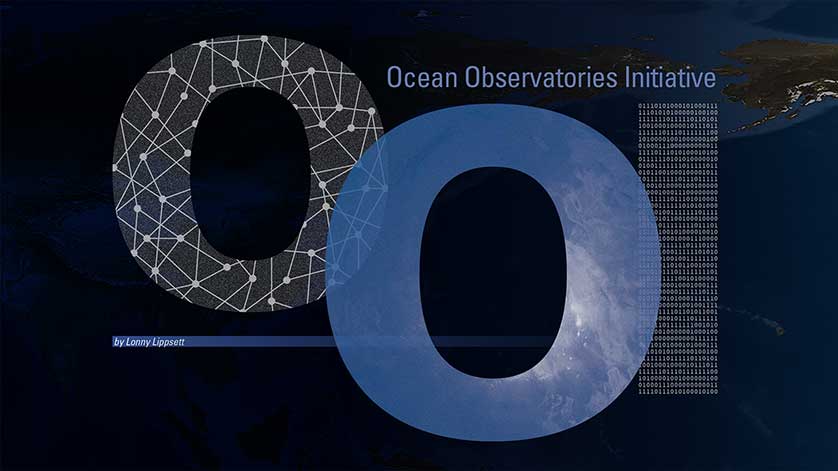The Ocean Observatory Initiative is Up and Running

After decades of planning, the Ocean Observatories Initiative is up and running. The $386 million project, funded by the National Science Foundation, establishes long-term platforms that can monitor ocean conditions 24/7 for decades.
About the Initiative
Sailors and scientists have gone to sea for centuries to unravel the inner workings of the watery region that covers two-thirds of our planet. But they have always had to return soon to land. So they could capture only snapshots of what’s happening in the ocean.
But the ocean is a dynamic place. Scientists aspired to get more than just intermittent glimpses. In the 1980s, ocean scientists began to dream about changing the game. They envisioned planting sustained outposts in the ocean to collect measurements and monitor conditions 24/7—for decades. Such detailed, ongoing data would enhance scientists’ ability to observe complex processes and changes that occur over seasons, years, and decades in the oceans, to understand gradual impacts that might unfold as Earth’s climate changes, and to “be there” when unusual phenomena occur.
In 2007, the National Science Foundation launched a $386 million project to establish a long-term presence in the ocean: the Ocean Observatories Initiative, or OOI. It is the NSF's largest investment in ocean science, consisting of 83 platforms, including moorings anchored on the seafloor or connected to seafloor cables in scientifically strategic locations in the Atlantic and Pacific Oceans. The moorings house a cornucopia of sensors to collect data on chemical, biological, and physical conditions from the water’s surface down thousands of feet to the ocean floor. Scientists can also use the platforms for their own instruments.
The observatories generally operate around the clock, 365 days a year, with a planned life of 25 years. They are augmented by remotely controlled robotic vehicles and gliders that swim between and beyond the moorings, collecting data. The growing trove of data is freely available online in near-real time. The OOI program reached a milestone in 2016 when its network of ocean sensor systems became fully deployed and operational. From OOI’s inception, Woods Hole Oceanographic Institution has been a major partner in the project, along with Oregon State University, Rutgers University, and the University of Washington. In 2009, WHOI began the design and construction of Global Arrays to be deployed in remote high-latitude regions and a Coastal Pioneer Array, off New England. WHOI scientists and engineers now regularly travel to the arrays to maintain and upgrade them.
The goal is to provide data on the ocean to scientists, policymakers, educators, students, and the general public and transform their ability to explore and understand the ocean.
In a special series of articles, Oceanus magazine explores the Ocean Observatories Initiative and WHOI's role in it.
By: Lonnie Lippsett, Woods Hole Oceanographic Institution

